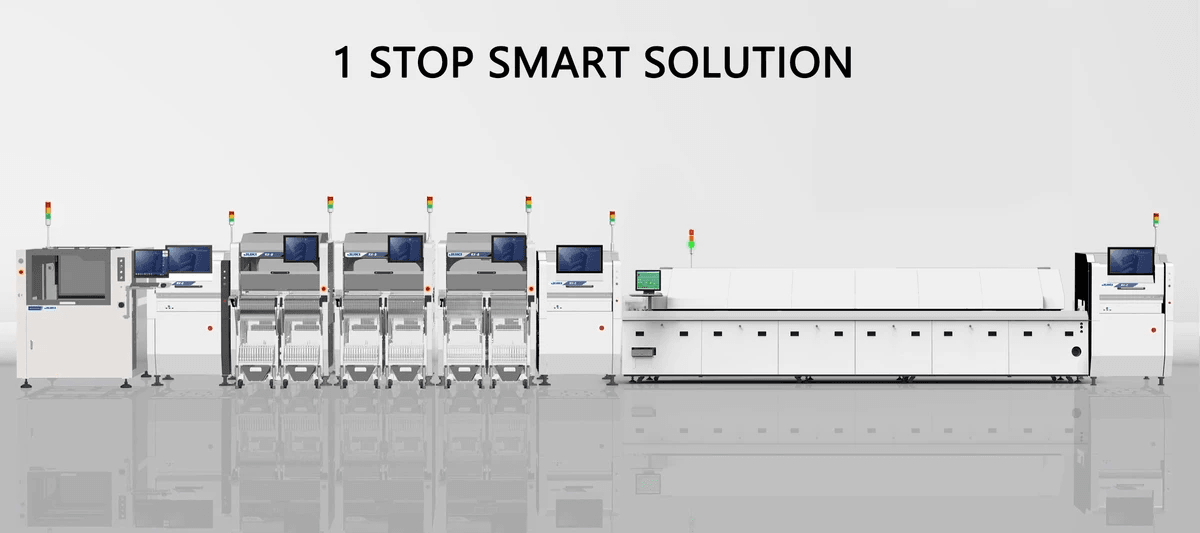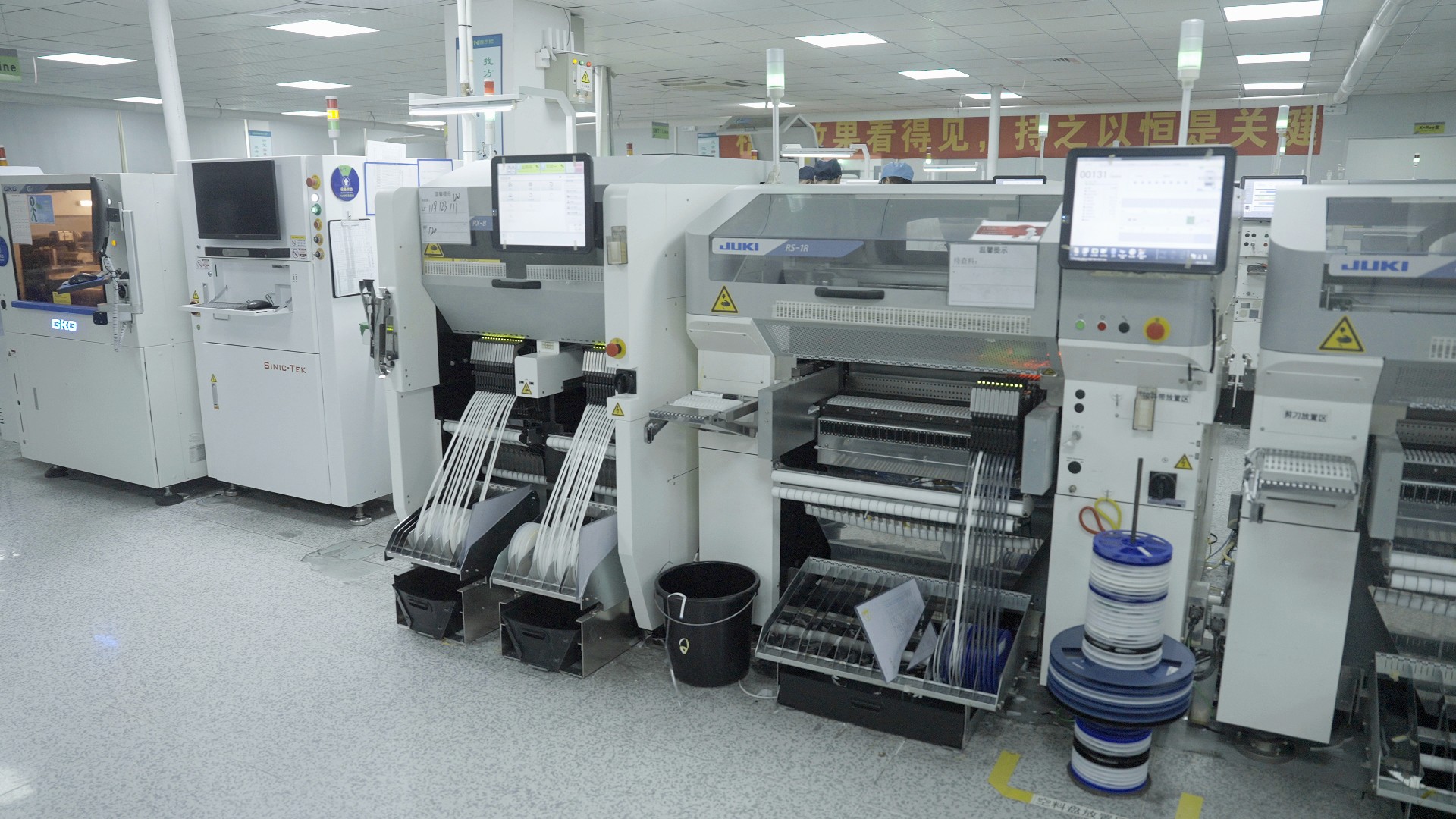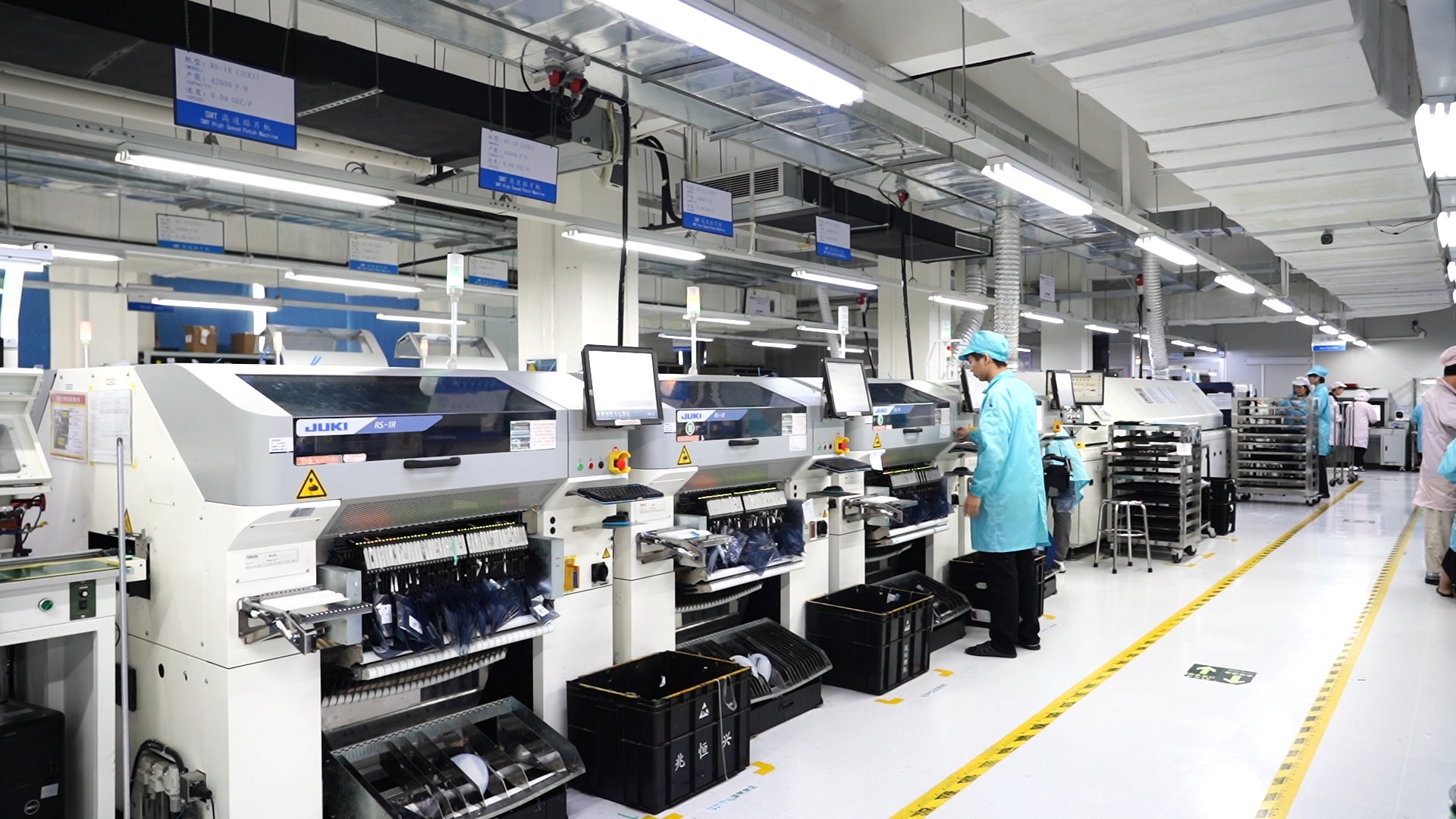Introduction

Understanding PCB Assembly Costs
PCB assembly costs are influenced by various elements, including material quality and complexity of design. One pivotal factor is the type of equipment used, particularly the SMT pick and place machine, which automates component placement with precision. This leads us to ponder: what is pick and place in SMT? It’s essentially a mechanism that ensures components are accurately placed on printed circuit boards, significantly impacting both efficiency and cost.
Factors Affecting PCB Assembly Pricing
Several factors contribute to PCB assembly pricing beyond just materials and labor. For instance, different types of SMT machines can vary widely in price; understanding what is the machine used in SMT helps you grasp why costs fluctuate so much. Additionally, considering what are the three types of SMT can provide insight into how each affects overall pricing—whether it's through speed, accuracy, or operational expenses.
Importance of Choosing the Right Manufacturer
Selecting an appropriate manufacturer for your PCB assembly needs is not just a matter of convenience; it can make or break your project’s budget and quality standards. With numerous SMT pick and place machine manufacturers out there, understanding their capabilities becomes essential for ensuring you get value for your investment. Ultimately, partnering with a reliable assembler will enhance production efficiency while keeping costs manageable.
Breakdown of PCB Assembly Costs

Understanding the various components that contribute to PCB assembly costs is crucial for manufacturers and businesses alike. These costs can be broadly categorized into material, labor, and equipment expenses. Each of these elements plays a significant role in determining the overall pricing structure and ultimately affects the profitability of the production process.
Material Costs in PCB Assembly
Material costs are often the most substantial part of PCB assembly expenses, as they encompass everything from copper and resin to solder paste and other electronic components. The choice of materials directly influences not only the performance but also the cost-effectiveness of your final product. When considering what is pick and place in SMT?, it's essential to note that high-quality materials can enhance reliability during assembly, thus reducing potential rework costs later on.
Additionally, fluctuations in material prices can impact overall budgets significantly; therefore, staying informed about market trends is vital for manufacturers. Sourcing materials from reputable SMT pick and place machine manufacturers can also lead to better pricing options due to bulk purchasing agreements or long-term partnerships. Ultimately, understanding how material choices affect both quality and cost will help businesses make informed decisions.
Labor Costs Explained
Labor costs are another critical factor affecting PCB assembly pricing, as skilled technicians are required to operate complex machinery like SMT pick and place machines effectively. The labor force must be well-trained in handling various tasks involved in assembly processes, including setup, operation, inspection, and troubleshooting. What is the machine used in SMT? It’s essential for operators to understand these machines thoroughly since their effectiveness directly correlates with productivity levels.
Moreover, labor costs can vary based on location; regions with higher living expenses may demand higher wages for skilled workers. This means that while you might save on equipment like a smt pick and place machine price-wise by choosing a less expensive model or brand, you could offset those savings with increased labor costs if your workforce isn’t adequately trained or experienced. Therefore, balancing both aspects is crucial for maintaining profitability.
Equipment Expenses Overview
These machines automate component placement onto PCBs with precision—reducing human error while improving efficiency—and they come at varying price points depending on their capabilities and features. Understanding what is the pick and place mechanism helps manufacturers appreciate its role in speeding up production cycles while maintaining quality control.
There are three types of SMT: low-speed machines suited for small runs; mid-range machines designed for moderate volumes; and high-speed ones intended for large-scale productions that require rapid output without sacrificing accuracy. Each type has its own associated costs—both initial purchase prices as well as ongoing maintenance needs—which should be factored into any budgeting considerations when selecting equipment from SMT pick and place machine manufacturers.
Finally, it’s important to remember that investing wisely in equipment will pay off over time through improved productivity rates and lower defect rates during assembly processes—ultimately leading to greater customer satisfaction!
The Role of an SMT Pick and Place Machine

In the world of PCB assembly, the SMT pick and place machine is a game changer. This sophisticated equipment is essential for placing components onto printed circuit boards with precision and speed. Understanding how these machines influence pricing can help manufacturers make informed decisions about their production processes.
How SMT Machines Influence Pricing
When it comes to assembly costs, the price of an SMT pick and place machine can significantly impact overall expenses. These machines streamline the assembly process, reducing labor costs by automating component placement. Additionally, factors such as machine speed, accuracy, and technology level determine the initial investment required—thus influencing long-term production costs.
The choice of machine also affects operational efficiency; a more advanced model may have a higher upfront cost but can lead to savings over time through reduced cycle times and waste. Consequently, understanding what is pick and place in SMT helps manufacturers assess whether investing in high-quality equipment aligns with their budgetary constraints. Ultimately, selecting the right SMT pick and place machine can enhance productivity while keeping costs manageable.
Benefits of Automated Production
Automated production using an SMT pick and place machine offers numerous advantages that manual processes simply can't match. First off, these machines improve consistency in component placement—a critical factor in ensuring product quality. With precise alignment capabilities, they minimize errors that might arise from human intervention.
Moreover, automated systems significantly boost throughput rates compared to manual methods; they can operate tirelessly without breaks or fatigue, allowing for faster turnaround times on large orders. This efficiency translates into lower labor costs per unit produced while also enhancing scalability for growing businesses looking to meet increasing demand without sacrificing quality or speed.
Comparing Manual vs. Automated Assembly
When weighing manual versus automated assembly methods in PCB production, it's crucial to consider both cost implications and quality outcomes. Manual assembly often requires more time per unit due to human limitations; therefore, labor costs can accumulate quickly when dealing with high-volume orders. In contrast, an SMT pick and place machine excels at rapid component placement—reducing both time spent on each board and associated labor expenses.
However, one must also evaluate flexibility: while manual assembly allows for quick adaptations during prototyping phases or low-volume runs, automated systems shine when it comes to repetitive tasks at scale—making them ideal for mass production scenarios where consistency is key. Ultimately, businesses must assess their specific needs against these factors before deciding which method best suits their operations.
Quality Control and Its Impact on Cost

Quality control is a crucial aspect of PCB assembly that directly affects costs, efficiency, and product reliability. Ensuring that every component is correctly placed and functioning as intended can prevent costly reworks and delays in production. In the realm of surface mount technology (SMT), where precision is paramount, quality assurance becomes even more critical.
Importance of Quality Assurance in Assembly
Quality assurance in PCB assembly ensures that products meet specified standards before they reach the market. This process not only helps maintain brand integrity but also enhances customer satisfaction by minimizing defects. With an SMT pick and place machine playing a central role in this process, manufacturers can achieve higher accuracy levels, which ultimately reduces waste and lowers overall costs.
Common Quality Control Practices
Common quality control practices include regular inspections, automated testing processes, and adherence to industry standards such as IPC-A-610 for electronic assemblies. Utilizing an SMT pick and place machine allows for real-time monitoring during the assembly process, ensuring components are accurately placed according to specifications. Additionally, employing techniques like X-ray inspection or Automated Optical Inspection (AOI) can further enhance quality assurance efforts by identifying potential issues early on.
Cost of Failing to Meet Quality Standards
The cost of failing to meet quality standards can be staggering for manufacturers; it often includes not just the expenses related to rework but also lost time, damaged reputations, and potential legal liabilities. When components are improperly assembled due to inadequate quality control practices—perhaps from outdated methods instead of using advanced machines like SMT pick and place machines—the fallout can ripple through supply chains affecting many stakeholders. Therefore, investing in robust quality assurance measures not only safeguards against these risks but also promotes long-term cost-effectiveness.
Short-Term Equipment Leasing vs. Buying

Advantages of Leasing Equipment
Leasing equipment like an SMT pick and place machine offers several advantages that can make it an attractive option for many businesses. First off, leasing allows companies to access high-quality machinery without the hefty upfront costs associated with purchasing. Additionally, leasing agreements often include maintenance services, which can save time and money while ensuring that your pick and place mechanism operates at peak efficiency.
Another significant benefit is flexibility; if your production needs change or you decide to experiment with different types of SMT machines, leasing allows for easier upgrades or transitions. This is particularly valuable in a fast-paced industry where new technologies emerge frequently—what is cutting-edge today may be outdated tomorrow! Furthermore, leasing can help preserve cash flow since you won’t have to tie up capital in expensive machinery.
When to Consider Purchasing Equipment
While leasing has its perks, there are also compelling reasons to consider purchasing equipment outright. If you have established production volumes and anticipate consistent demand for specific products over time, investing in a reliable SMT pick and place machine could be more cost-effective in the long run. Ownership means no ongoing lease payments—just the satisfaction of knowing that you have full control over your machinery.
Additionally, if you're working with specialized components or techniques that require a tailored approach not easily met by standard leased equipment, owning your own machine might be essential. The pick and place mechanism can sometimes need fine-tuning or modifications based on specific project requirements; having ownership allows for this customization without restrictions from a leasing agreement.
Bensun Technology’s Flexible Options
Bensun Technology understands that every manufacturer has unique needs when it comes to PCB assembly equipment decisions—whether they’re looking at smt pick and place machine prices or considering various types of SMT machines available on the market today. That’s why they offer flexible options for both leasing and purchasing their state-of-the-art SMT pick and place machines tailored to fit different budgets.
Their offerings include various models suited for diverse production scales—from small-scale operations needing just a few units up to larger manufacturers requiring extensive setups with multiple machines working in harmony. Plus, Bensun Technology provides exceptional support throughout the process; whether you're interested in learning about what is pick and place in SMT or want guidance on selecting the right model for your facility's needs.
Choosing the Right Manufacturer

Selecting the right PCB assembler is a critical decision that can significantly impact your project’s success. With numerous options available in the market, it’s essential to consider various factors to ensure you partner with a manufacturer that meets your specific needs. From understanding their capabilities to assessing their technology, making an informed choice will save you time and money in the long run.
Key Considerations for Selecting a PCB Assembler
When it comes to choosing a PCB assembler, several key considerations come into play. First, evaluate their experience and expertise in handling different types of SMT (Surface Mount Technology) assemblies. Understanding what is pick and place in SMT is crucial; manufacturers should have advanced smt pick and place machines that can efficiently handle various components while maintaining precision.
Another important factor is the manufacturer's ability to scale production according to your needs. Whether you're producing small batches or large volumes, they should possess the necessary equipment and workforce flexibility. Additionally, inquire about their quality control measures—after all, what are the three types of SMT if not backed by solid quality assurance practices?
Evaluating Manufacturer Capabilities
To effectively evaluate manufacturer capabilities, start by examining their technology and equipment inventory. The machine used in SMT plays a pivotal role in determining production efficiency; thus, look for manufacturers equipped with state-of-the-art smt pick and place machines that offer reliability and speed. Understanding what is the pick and place mechanism will also help you gauge how well they can handle intricate designs.
Next, review their past projects or case studies related to similar assemblies as yours. This will give you insights into their experience with various components and complexities involved in your specific requirements. Finally, assess customer reviews or testimonials—happy clients often indicate a reliable partner who consistently meets expectations.
The Benefits of Working with Bensun Technology
Choosing Bensun Technology as your PCB assembler offers numerous advantages that set them apart from competitors. Their commitment to using advanced smt pick and place machines ensures high-quality assembly at competitive prices without compromising on speed or accuracy—definitely something worth considering when looking at smt pick and place machine prices!
Moreover, Bensun Technology's extensive experience across multiple industries means they understand diverse client needs—from prototyping to mass production—making them an ideal partner for any project size. Their dedication to quality assurance practices minimizes risks associated with failing standards while ensuring timely delivery of products tailored specifically for you.
In summary, selecting the right manufacturer involves careful consideration of capabilities, technology used—including understanding what is pick and place in SMT—and commitment to quality standards like those offered by Bensun Technology.
Conclusion

In wrapping up our exploration of PCB assembly costs, it’s essential to recognize the various components that contribute to pricing. Factors such as material costs, labor expenses, and equipment investments play critical roles in determining the overall budget for your project. Furthermore, the choice of manufacturer can significantly influence both quality and cost-effectiveness in your PCB assembly process.
Recap of Key Cost Factors
To summarize, understanding PCB assembly costs begins with a breakdown of material, labor, and equipment expenses. The smt pick and place machine is a pivotal piece of equipment that can drive efficiency and precision in assembly processes. Additionally, quality control measures are vital; failing to meet standards can lead to costly reworks or product failures.
Final Thoughts on Cost-Effectiveness
When considering cost-effectiveness in PCB assembly, it’s crucial to weigh the benefits of automated solutions like the smt pick and place machine against their initial investment prices. Automated systems not only enhance production speed but also reduce human error—making them a worthwhile consideration for many manufacturers. Ultimately, investing wisely in technology while ensuring quality control can lead to significant long-term savings.
How to Get Started with PCB Assembly
Getting started with PCB assembly requires careful planning and selection of appropriate tools and manufacturers. Begin by researching SMT pick and place machine manufacturers that align with your project needs; consider factors like pricing, capabilities, and support services offered. Once you have chosen a reliable partner for your assembly needs, you’ll be well on your way to launching a successful product.
